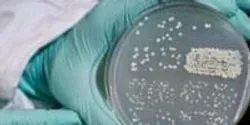DNA

Researchers from North Carolina State University, Duke University and the University of Copenhagen have created the world’s largest DNA origami, which are nanoscale constructions with applications ranging from biomedical research to nanoelectronics.

The ability to accurately repair DNA damaged by spontaneous errors, oxidation or mutagens is crucial to the survival of cells. This repair is normally accomplished by using an identical or homologous intact sequence of DNA, but scientists have now shown that RNA produced within cells of a common budding yeast can serve as a template for repairing the most devastating DNA damage – a break in both strands of a DNA helix.

Scientists at the University of Kentucky, led by nano-biotechnologist Peixuan Guo, have made some critical discoveries over the past year into the operation of biomotors, the molecular machines used by viruses and bacteria in the packaging of DNA.

Human cells make new copies of their DNA billions of times each day, a crucial process upon which life itself depends. However, scientists do not fully understand how cells unzip the double-stranded DNA molecule before replicating both halves of it. New work at Rockefeller may help change that.

Researchers at Karolinska Institutet in Sweden have headed a study that has provided new knowledge about the EphA2 receptor, which is significant in several forms of cancer. This is important knowledge in itself – but just as important is how this study, which is published in the highly respected journal Nature Methods today, was conducted. The researchers used the method of DNA origami, in which a DNA molecule is shaped into a nanostructure, and used these structures to test theories about cell signalling.

Jacqueline K. Barton, Ph.D., professor of chemistry and chair of the division of chemistry and chemical engineering at the California Institute of Technology, has been named winner of the 2015 Priestley Medal by the American Chemical Society (ACS). It is the highest honor bestowed by the world’s largest scientific society.













